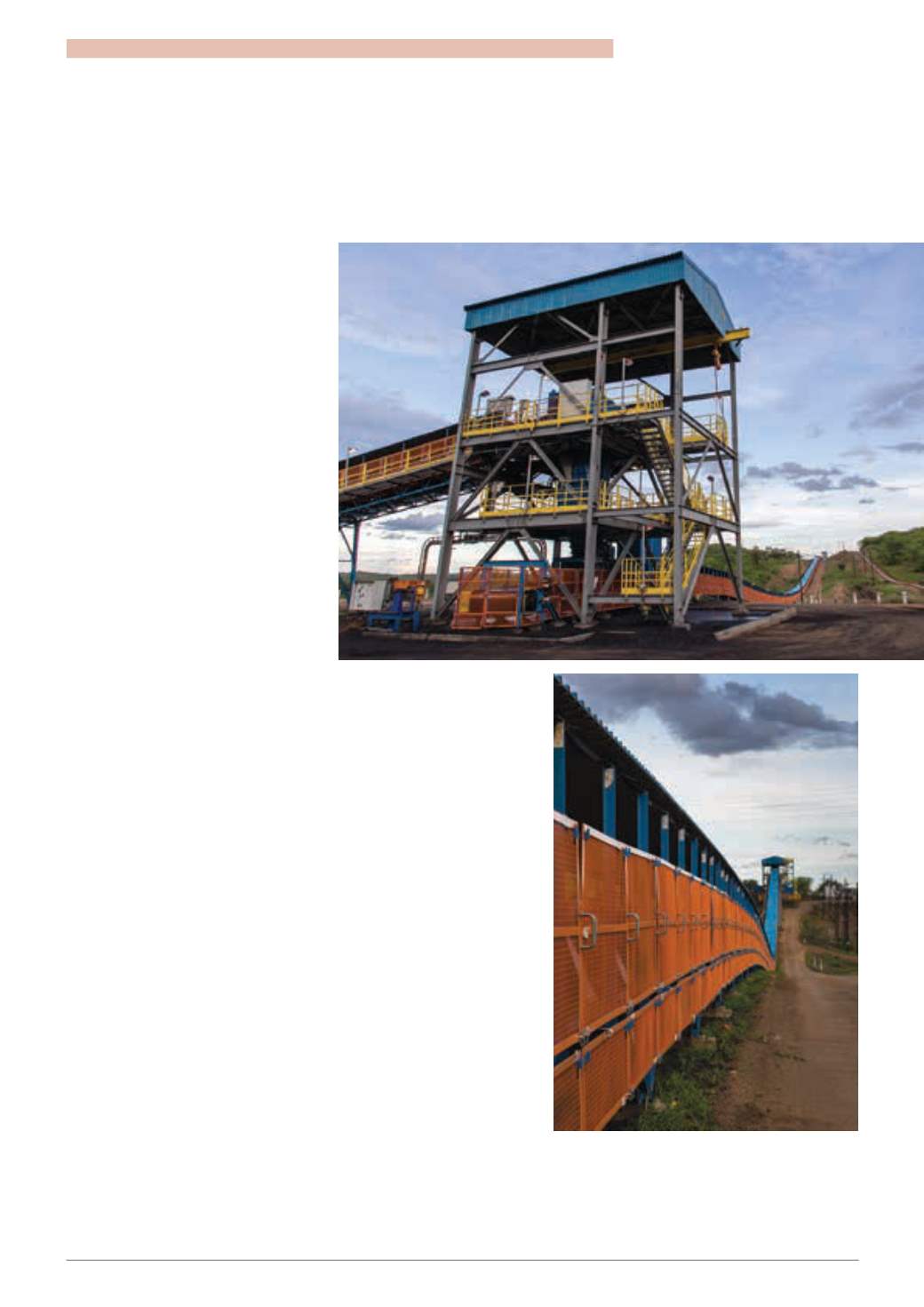

April 2017
•
MechChem Africa
¦
23
⎪
Computer-aided engineering
⎪
C
onveyors are the arteries of any
bulk materials handling system.
Irrespective of whether undertak-
ing new conveyor construction
or upgrades, it is not only necessary to have
access to in-depth engineering and design
knowledge, it is critical to be able to execute
a project nomatter how remote the location.
With its customer-centric approach,
FLSmidth Roymec has a strong background
in structural engineering, fabrication and suc-
cessful project implementation for conveyor
systems. The company’s major differentiator
is its use of a sophisticated proprietary soft-
ware programme, which facilitates absolute
control of all elements of the conveyor build.
This innovative approach to managing proj-
ect logistics has realised significant savings,
which is an important factor in all construc-
tion activities.
Patrick Smith, manager for scoping and
business improvements for FLSmidth’s South
African operation, says that while many
companies have the capability to fabricate
conveyor structures and supply ancillary
components for conveyor systems, none has
access to this type of sophisticated process
control.
“Being fully aware of the need to optimise
project schedules and still retain absolute
control of all aspects of a project, FLSmidth
made a significant investment in developing
this resource,” Smith says.
“It allows us to partner effectively with
customers from concept to completion and
access information whenever needed, allow-
ing an active responsive interface with all
throughout the entire process. This allows
significant productivity increaseswithassoci-
ated cost reductions.”
The FLSmidth smart numbering system
uses the source information from the initial
designthroughtotheendoftheproject.Smith
explains that it is a seamless process with
integral capability to handle revisions. There
is no manual input required and tracking
continues through design, in-house detailing,
fabrication, galvanising, painting, trial assem-
blies (where relevant) and throughall logistics
functions to final on-site installation.
“Eachproject is controlled fromthedesign
phase where the smart number is conceived
and this makes it easier to control the flow of
materials to site,” Smith says.
Jaco van derWesthuizen, senior develop-
er, at FLSmidth’s SouthAfricanoperation, has
A smart numbering system used by FLSmidth Roymec allows for a seamless process with integral capability to handle revisions.
This sophisticated proprietary software programme facilitates absolute control of all elements of the conveyor build and has
already realised significant savings on projects, an important factor in all construction activities.
A typical FLSmidth conveyor transfer
point. Access to sophisticated process
control such as its smart numbering
system enables FLSmidth’s South
Africa to fabricate quality conveyor
structures and supply ancillary
components on time, in sequence and
at the lowest cost.
Partnering effectively
using smart numbering
overseen the software design and
implementation of the FLSmidth
systemusinganAPI interface to the
Tekla drawing data. This allows the
information tobemadevisible toall
and facilitates the tracking process.
“The software stores all the
information from the Tekla models
in one single database allowing
easy access at any stage. This is an
important advantage as it allows
everyone involved in the project to
access and mine the information
using the API interface,” van der
Westhuizen says.
The FLSmidth smart numbering
system is always the same. It is a
hard stamp number that is simple
to read. FLSmidth’s people can
easily understand its numeric hierarchical
structure and this facilitates tracking of all
elements of the project as well as easy loca-
tion of different fabricated members on site
and the erection thereof.
Significantly, it eliminates double handling
and the site teams have been trained to rec-
ognise thenumber. This enables theFLSmidth
teams todeliver aqualityproduct on time and
in sequence, at the lowest cost.
q
















